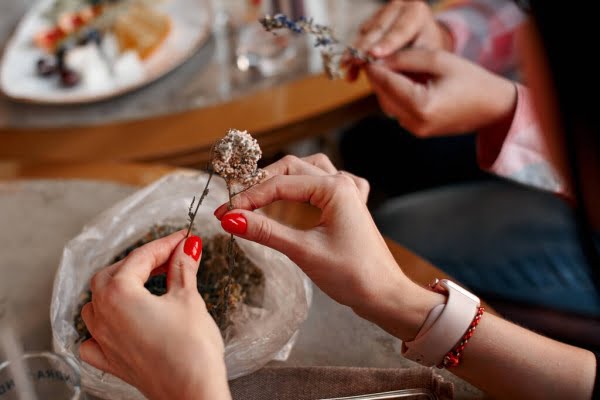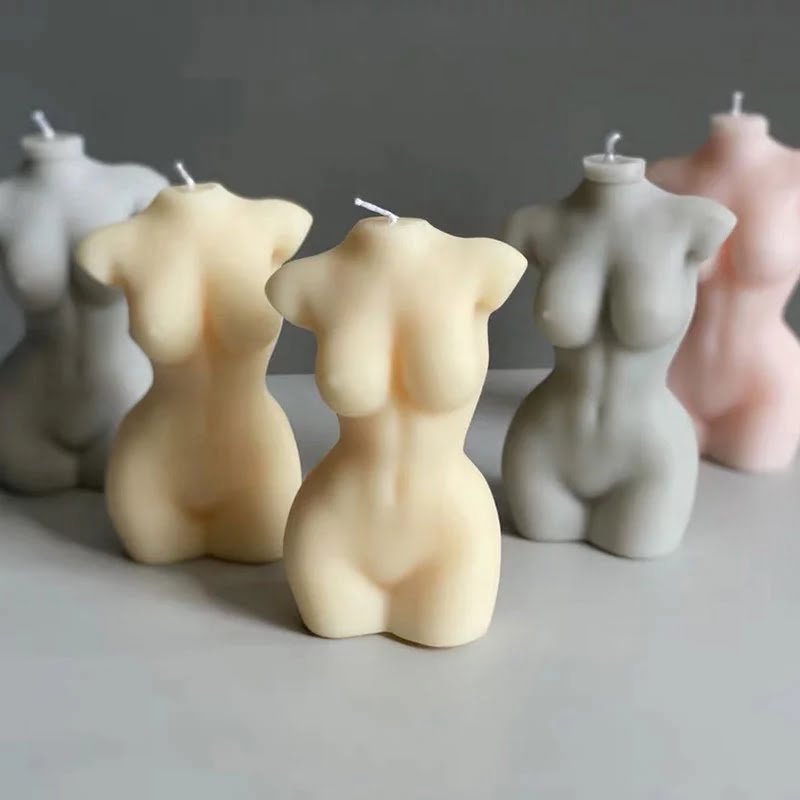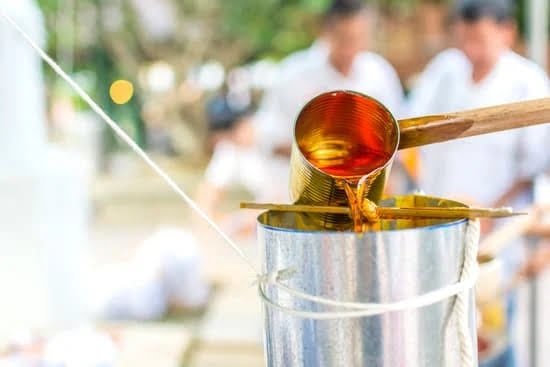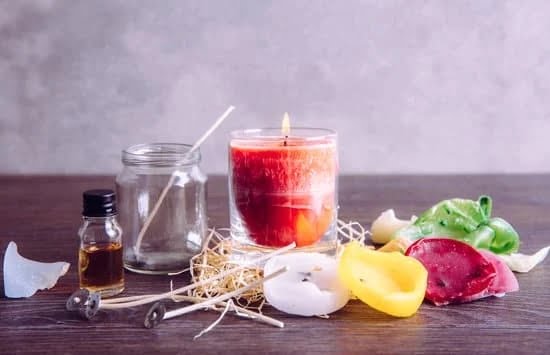Making your own candles can be a rewarding hobby that not only allows you to tap into your creative side, but also creates a welcoming ambiance in your home. The process of candle making can be both relaxing and fulfilling, as you have the opportunity to customize the scent, color, and design of each candle. While there are various factors to consider when embarking on this journey, one of the most important aspects is understanding the cost involved.
When it comes to making your own candles, there are initial costs associated with purchasing the necessary equipment and supplies. These can include items such as a melting pot, thermometer, molds or containers, wicks, fragrance oils or essential oils, dyes or pigments, and more. By investing in quality materials upfront, you can ensure a better candle-making experience and produce candles that burn cleanly and efficiently.
In addition to the equipment and supplies required for candle making, different types of wax need to be considered. Soy wax, beeswax, and paraffin wax each have their own pros and cons in terms of price point, burn time, scent throw, and environmental impact. Understanding these differences will help you choose the right wax for your needs while keeping costs in mind.
While making your own candles does require an initial investment and ongoing expenses for materials, many individuals find it to be a cost-effective option in the long run. By customizing every aspect of the candle-making process from scent to color to packaging options like jars or tins, you are able to create unique gifts or decorative accents for your home at a fraction of the cost compared to store-bought alternatives.
In this article series on the cost of making candles,you will discover all you need to know about turning candle making into a rewarding hobby while keeping an eye on your wallet.
Understanding the Initial Costs
Gathering the Essential Equipment
Before diving into the world of candle making, it’s important to acquire the necessary equipment. While some tools are inexpensive and readily available, others may require a higher initial investment. Here are the basic supplies needed for candle making:
- Wax Melting Pot: A dedicated pot for melting wax is essential. A double boiler setup or a specialized wax melter can be used.
- Thermometer: To ensure that your wax reaches the optimal temperature, a thermometer is crucial. Look for one specifically designed for candle making.
- Containers or Molds: Depending on your preferred candle style, you’ll need containers or molds to hold the melted wax as it solidifies. These can be made of glass, aluminum, silicone, or other heat-resistant materials.
- Heat Source: An electric hot plate or stove burner is typically used to heat the wax melting pot.
- Stirring Utensils: Wooden spoons or dedicated candle-making stirring sticks are needed to mix fragrance oils and dyes into the melted wax.
- Packaging Materials: If you plan on giving away or selling your candles, consider investing in packaging materials such as boxes, labels, and tissue paper.
Acquiring Candle Making Supplies
Aside from equipment, various supplies are required to make candles. These include waxes, wicks, fragrance oils or essential oils, dyes or pigments, and additives like stearic acid or vybar. The cost of these supplies can vary depending on their quality and quantity purchased.
- Waxes: Different types of waxes offer unique properties and characteristics when it comes to scent throw and burn time. Popular choices include soy wax (made from soybean oil), beeswax (naturally produced by bees), and paraffin wax (derived from petroleum). Consider both budgetary constraints and personal preferences when selecting a wax type.
- Wicks: Choosing the right wick is crucial for a clean and efficient burn. Factors to consider include wick material, size, and shape. Cotton or wood wicks are popular options. Be sure to select a wick that matches the diameter of your candle container or mold.
- Fragrance Oils or Essential Oils: These oils are what give candles their captivating scents. While fragrance oils tend to be more cost-effective, essential oils offer a natural alternative at a potentially higher price point.
- Dyes or Pigments: To add color and vibrancy to your candles, you’ll need dyes or pigments. Dye blocks or liquid dyes are commonly used and come in various shades. Pigments offer a wider range of colors but can be more expensive.
- Additives: Depending on the desired characteristics of your candles, additives such as stearic acid (for increased hardness), vybar (for better scent throw), or UV inhibitors (to prevent discoloration) may be needed.
By understanding the initial costs associated with equipment and supplies for candle making, you’ll be better prepared to embark on this rewarding hobby while also managing your budget effectively.
Exploring Different Types of Wax
When it comes to making your own candles, one of the most important decisions you will have to make is choosing the right type of wax. There are several options available, each with its own pros and cons. In this section, we will explore the different types of wax commonly used in candle making: soy wax, beeswax, and paraffin wax.
Soy wax has gained popularity in recent years due to its natural and renewable source. Made from soybean oil, it is biodegradable and produces a clean burn with minimal soot. Soy candles also tend to have a longer burn time compared to other types of wax.
Additionally, soy wax is known for its excellent scent throw, which means that it can effectively hold and release fragrances. However, soy wax can be more expensive than other waxes and may require additives to improve its performance.
Beeswax is another natural option that many candle makers favor. It is a byproduct of honey production and has a distinctive sweet aroma. Beeswax candles have a long burn time and produce a bright flame with minimal smoke or soot. Furthermore, beeswax has natural air-purifying properties, releasing negative ions when burned which can help eliminate pollutants from the air. On the downside, beeswax can be quite expensive compared to other waxes.
Paraffin wax is perhaps the most commonly used wax in candle making due to its affordability and versatility. It is a byproduct of petroleum refining and offers a wide range of melting points depending on its formulation. Paraffin candles typically have a strong scent throw and can easily be colored using dyes or pigments. However, paraffin candles may release more soot when burned compared to other types of wax.
| Type of Wax | Pros | Cons |
|---|---|---|
| Soy Wax | Natural and renewable source, clean burn, longer burn time, excellent scent throw | More expensive, may require additives for better performance |
| Beeswax | Natural fragrance, long burn time, minimal smoke or soot, air-purifying properties | Expensive compared to other waxes |
| Paraffin Wax | Affordable, versatile, strong scent throw, easy to color | Can release more soot when burned compared to other waxes |
Choosing the Right Wick
When it comes to making your own candles, choosing the right wick is crucial for achieving a clean and efficient burn. The wick not only determines how well the candle will burn, but also influences its scent throw and overall performance. There are several factors to consider when selecting a wick that is suitable for your candle-making project.
Size Matters
One of the most important considerations when choosing a wick is its size. The size of the wick determines how much fuel (wax) it can draw up to burn efficiently. If the wick is too small, it may result in an uneven burn or tunneling, where the wax doesn’t melt evenly across the surface of the candle. On the other hand, if the wick is too large, it can cause excessive smoking or sooting.
Candle Diameter
Another factor to consider when selecting a wick is the diameter of your candle. Different sized candles require different wicks to ensure an optimal burn. As a general rule, larger candles will need thicker and longer wicks, while smaller candles will require thinner and shorter ones. It’s important to match the size of your wick with the diameter of your candle to achieve an even and steady flame.
Types of Wax
The type of wax you use also plays a role in determining which type of wick is best suited for your candle-making project. Soy wax, for example, tends to require larger-sized wicks compared to paraffin or beeswax due to its lower melting point and different composition.
It’s essential to consider how each type of wax interacts with different types of wicks in order to find the perfect match that promotes clean burning and extends the life of your candle.
Choosing the right wick for your homemade candles is a critical step in ensuring their overall performance and burn quality. By considering factors such as size, candle diameter, and type of wax, you can achieve a clean and efficient burn that enhances the enjoyment and longevity of your candles.
Essential Oils vs. Fragrance Oils
When making your own candles, one important decision you’ll need to make is whether to use essential oils or fragrance oils for scent. Both options have their pros and cons, but a key factor that often comes into play is cost-effectiveness. Let’s explore the differences between essential oils and fragrance oils and determine which option is more cost-effective.
Essential oils are derived from natural sources such as plants, flowers, and fruits. They offer a wide range of scents and are known for their therapeutic benefits. However, they can be quite expensive compared to fragrance oils.
Essential oils are typically produced through a process called steam distillation or cold pressing, which requires large quantities of raw materials to produce a small amount of oil. As a result, the cost per ounce of essential oil can be significantly higher compared to fragrance oils.
On the other hand, fragrance oils are synthetic in nature and created in laboratories. They are designed to mimic various scents and often come in a wider variety of options than essential oils. Due to their artificial production, fragrance oils tend to be less expensive than essential oils. The cost savings can be significant when purchasing fragrance oils in bulk quantities or for larger candle-making projects.
| Oil Type | Average Price per Ounce |
|---|---|
| Essential Oil | $20 – $100 |
| Fragrance Oil | $1 – $10 |
It’s important to note that while fragrance oils may be more cost-effective upfront, they may not offer the same level of complexity or therapeutic properties as essential oils. Some candle makers prefer to use a combination of both oils to achieve a desired scent profile while keeping costs manageable. Additionally, it’s worth considering the potential health and environmental impacts associated with synthetic fragrance oils compared to natural essential oils.
Adding Color
When it comes to candle making, adding color is an essential step that allows you to personalize and enhance the aesthetic appeal of your creations. There are various options available for coloring candles, including dyes and pigments. In this section, we will explore the differences between these two options and discuss their pros and cons.
Dyes
Candle dyes are specially formulated colorants that can be easily incorporated into the wax during the melting process. They come in the form of liquid or solid chips/pellets, offering a wide range of colors to choose from. One of the main advantages of using candle dyes is their ability to produce consistent and vibrant hues. They blend well with the wax, resulting in even distribution of color throughout the candle.
However, it’s important to note that not all dyes are created equal. Some may fade over time when exposed to sunlight or certain fragrances, compromising the longevity of your candles’ colors. Additionally, some candle dyes may contain chemicals that can release toxins when burned. It is crucial to choose high-quality dyes specifically designed for candle making to ensure safety and long-lasting color.
Pigments
Unlike dyes, pigments are insoluble substances that do not dissolve in wax but instead disperse evenly throughout it. Pigments typically come in powder form and need to be mixed with a solvent or oil before being added to the melted wax. Pigments offer more intense colors compared to dyes as they provide better opacity and saturation.
One key advantage of using pigments is their resistance to fading over time. They tend to be more stable when exposed to UV light and fragrance oils, ensuring that your candles maintain their vibrant colors for longer periods.
However, because pigments do not dissolve in wax like dyes do, they can sometimes result in a slightly grainy appearance or speckles in the finished candle. This may be desirable for some artistic effects, but not ideal for those seeking a perfectly smooth finish.
The Cost Breakdown
Making your own candles can be a rewarding hobby, but it’s important to understand the cost breakdown before diving in. By calculating the expenses involved in making a single candle, you can gain a better understanding of whether this DIY endeavor is worth it for you.
To begin with, let’s break down the costs involved in candle making. Here is a list of the essential equipment and supplies needed:
– Wax: The type of wax you choose will affect the overall cost. Soy wax and beeswax are generally more expensive than paraffin wax. Consider your preferences and budget when selecting the right wax for your candles.
– Wick: Choosing the right wick is crucial for a clean and efficient burn. Factors such as fragrance load, candle diameter, and type of wax will determine the appropriate wick size. Keep in mind that different wicks come at different prices, so factor this into your cost breakdown.
– Fragrance/essential oils: Adding scent to your candles can enhance the overall experience. Essential oils tend to be more costly compared to fragrance oils. Consider whether you’re willing to invest in higher-quality scents or opt for more affordable options.
– Colorants: If you want vibrant and long-lasting candles, adding color is essential. Dyes and pigments are two common options for coloring your candles. Dyes are usually cheaper but may result in less saturated colors compared to pigments.
Now that we’ve covered the essentials, let’s move on to other miscellaneous costs involved in making a single candle:
– Containers: Whether you choose glass jars or tin containers, they come at varying costs depending on their size and quality.
– Heat source: You’ll need heat sources like double boilers or melting pots to melt your wax efficiently. Take into account any additional expenses related to this equipment.
– Tools: From thermometers for measuring temperatures to stirring tools for mixing fragrance oils, investing in quality tools ensures better results but also adds to the initial cost.
– Packaging: If you plan on gifting or selling your homemade candles, packaging is an important consideration. Boxes, labels, and other decorative elements can increase the overall cost per candle.
By considering all these expenses, you can calculate the total cost involved in making a single candle. Keep in mind that these costs can vary depending on factors such as quantity produced and bulk purchasing discounts. By understanding the cost breakdown, you’ll be better equipped to decide if making your own candles is financially viable for you.
Sourcing Affordable Materials
When it comes to making your own candles, the cost of supplies can quickly add up. However, with a little bit of planning and some helpful tips and tricks, you can save money while gathering your materials. Here are some strategies to help you source affordable candle-making supplies:
- Buy in Bulk: Purchasing ingredients and materials in bulk can significantly reduce costs. Many suppliers offer discounts for buying in larger quantities, so consider buying essential items like wax, wicks, fragrance oils, and dyes in bulk. Not only will this save you money in the long run, but it will also ensure that you have a steady supply of materials for future candle-making projects.
- Shop Sales and Clearance Sections: Keep an eye out for sales and clearance sections at local craft stores or online retailers. These sections often have discounted candle-making supplies that may include slightly imperfect items or discontinued products. By taking advantage of these deals, you can find high-quality materials at a fraction of the original price.
- Utilize Coupons and Discounts: Subscribe to newsletters or follow candle-making suppliers on social media platforms to stay updated on any exclusive coupons or discounts they offer. Additionally, consider joining loyalty programs or wholesale clubs if available as they may provide additional savings opportunities.
- Consider Alternative Suppliers: While craft stores are convenient options for purchasing candle-making supplies, they are not always the most affordable. Explore alternative suppliers such as online marketplaces or local wholesalers who specialize in bulk orders or offer competitive prices.
| Sourcing Strategy | Potential Savings |
|---|---|
| Buying in Bulk | Significant savings over time |
| Shopping Sales and Clearances | Discounted prices on high-quality materials |
| Utilizing Coupons and Discounts | Additional savings through exclusive offers |
| Considering Alternative Suppliers | Potentially lower prices from specialized vendors or wholesalers |
Time vs. Cost
Making your own candles can be a rewarding hobby, but it is important to consider the trade-off between the time and cost involved compared to buying candles from a store. While homemade candles can offer a unique and personalized touch, they require a significant investment of time and effort. Evaluating this trade-off can help determine if making your own candles is worth it for you.
Time: One of the main factors to consider when evaluating the trade-off between homemade and store-bought candles is the time commitment. Making candles from scratch involves several steps such as melting wax, adding fragrance or essential oils, pouring into molds, and allowing them to cool and set.
Additionally, you may need to experiment with different wick sizes or types for optimal burn performance. This entire process can take several hours depending on the complexity of your candle-making project.
Cost: While homemade candles may offer cost savings in the long run, there are initial expenses that need to be considered. These include purchasing equipment such as a double boiler or melting pot, a thermometer, molds or containers, wicks, dyes or pigments, fragrances or essential oils, and other optional accessories like labels or packaging materials. The cost of these supplies can vary depending on their quality and quantity needed for your candle-making projects.
Evaluating the Trade-Off: When evaluating whether making your own candles is worth the cost and effort compared to buying store-bought ones, it is important to consider your own personal preferences and priorities. Some people enjoy the creative process of making their own candles and find it to be a relaxing and enjoyable activity.
Others appreciate the ability to customize fragrances or colors according to their preferences. Additionally, homemade candles can make thoughtful gifts for loved ones or add a personal touch to special occasions.
Ultimately, whether making your own candles is worth it depends on factors such as how frequently you use candles, your budget, and the value you place on the creative process. If you enjoy candle making as a hobby and are willing to invest the time and effort, it can be a fulfilling experience. However, if time constraints or cost considerations are significant factors for you, buying store-bought candles may be a more practical option.
Going the Extra Mile
When it comes to making your own candles, there are several additional accessories and packaging options that you can consider to take your candle-making hobby to the next level. These accessories not only enhance the aesthetic appeal of your candles but also make them more practical and giftable. Here are some options to consider:
- Candle jars and containers: One of the most popular ways to package homemade candles is by using candle jars or containers. These come in various shapes, sizes, and materials such as glass, metal, or ceramic. Candle jars not only provide a safe and convenient way to burn your candles but also add a touch of elegance to your creations.
- Candle lids: Adding lids to your candle jars not only helps preserve the scent of the candle but also gives it a polished finish. Lids come in different styles, including solid lids or lids with ventilation holes for a cleaner burn.
- Labels and tags: To give your homemade candles a professional look, consider adding labels or tags with information about the scent, ingredients used, and any safety instructions. You can either create your own labels using printable sticker paper or purchase customizable labels online.
- Wick trimmers: Keeping your wicks trimmed is essential for maintaining a clean and efficient burn. Invest in a pair of wick trimmers to easily trim the excess wick before lighting your candle. Wick trimmers are designed with an angled edge that makes trimming quick and hassle-free.
- Candle accessories: Enhance the ambiance of your candles by incorporating various accessories such as candle holders, decorative accents, or even personalized charms. These can be placed around the candle jar or inside it to create unique visual effects when the candle is lit.
- Packaging materials: If you plan on gifting or selling your homemade candles, investing in high-quality packaging materials is important for a professional presentation. Consider using gift boxes, organza bags, or eco-friendly wrapping paper to package your candles and protect them during transportation.
By considering these additional accessories and packaging options, you can add a personal touch to your homemade candles and make them stand out. Whether you plan on keeping the candles for yourself or giving them as gifts, these options allow you to create a truly unique and customized product.
Conclusion
In conclusion, the cost of making your own candles can vary depending on factors such as the type of wax, wick, essential oils or fragrance oils used, and the additional accessories and packaging options chosen. While there are initial expenses involved in purchasing equipment and supplies, sourcing affordable materials and considering cost-effective options can help save money in the long run.
One of the benefits of making your own candles is that it can be a rewarding hobby. It provides an opportunity for creativity and customization, allowing you to create candles that suit your personal preferences and style. Additionally, it allows for greater control over the ingredients used, which can be a particularly appealing aspect for those concerned about allergens or toxins commonly found in mass-produced candles.
However, it’s important to consider the trade-off between time and cost when deciding whether making your own candles is worth it. While homemade candles may be more cost-effective compared to expensive luxury brands, the process of making them requires time and effort. From melting and mixing the wax to choosing fragrances and colors, creating each candle is a hands-on task that requires attention to detail.
Ultimately, whether making your own candles is worth the cost and effort depends on your personal interests and priorities. If you enjoy creative activities and have a passion for crafting unique scents and designs, then the overall experience may outweigh any financial considerations. On the other hand, if convenience or immediate affordability is more important to you, store-bought candles may be a better option.
Overall, making your own candles can be an enjoyable hobby that offers a sense of satisfaction in creating something by hand. By carefully considering costs, sourcing affordable materials,and evaluating the trade-off between time and cost, you can make an informed decision on whether this DIY endeavor aligns with your budgetand preferences.

Welcome to my candle making blog! In this blog, I will be sharing my tips and tricks for making candles. I will also be sharing some of my favorite recipes.





